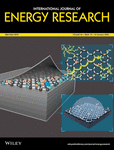Zinc-ion battery based on heteroatom-doped improved-quality graphene film as a functional current collector
Funding information: National Research Foundation of Korea, Grant/Award Number: 2020R1C1C1010611
Summary
Owing to their acceptable level of safety performances, low cost, and easy assembly, zinc-ion batteries (ZIBs) have attracted attention as encouraging energy storage devices. However, the intrinsic deficiency of the carbon-based current collector used to enhance the energy storage performances of ZIBs has limited the further application of ZIBs. To address this, the technical streaming of current collectors via the functionalization of their surface to enhance their chemical activity has appeared as a promising method for future-oriented ZIBs. Here, a fluorine and nitrogen codoped improved-quality graphene film was fabricated as a functional current collector for ZIBs, and the synergistic effect of the increased electrical conductivity and enhanced wettability of the current collector on the energy storage performance of ZIBs was demonstrated. The results revealed that the fabricated ZIB exhibited a high specific capacity of 380 mAh/g at a current density of 0.3 A/g, a remarkable long cycle life with a capacity retention of 80.6% for up to 150 cycles at a current density of 0.5 A/g, and a high energy density of 135 W h/kg and a power density from 270 W/kg. Moreover, the solid-state ZIB exhibited an outstanding mechanical flexibility and safety.




